Do you have a question about the Panasonic CQ-VD5005U and is the answer not in the manual?
Explains the meaning of warning and caution symbols used in the manual for safe operation and potential hazards.
Covers essential safety warnings for operating the unit, including driver distraction and proper power supply.
Crucial safety warnings related to installation, such as battery disconnection and avoiding airbag interference.
Provides cautions regarding volume levels, physical handling, environmental exposure, and AUX connections.
Details cautions for installation, including lead handling, part usage, ventilation, and angle considerations.
Advises caution regarding Class I Laser Product operation and servicing to avoid radiation exposure.
Explains how the system is designed to prevent driving distractions, requiring parking brake engagement for video display.
Provides guidelines for handling the LCD panel, including temperature range, impact, and sunlight exposure.
Details differences between models CQ-VD5005U and CQ-VD5005L, and lists included product components.
Lists contact information for product operation assistance and service centers in Puerto Rico and Canada.
Provides telephone numbers and contact details for warranty service and product repairs in Canada.
Outlines the scope of the limited warranty, including parts and labor coverage for product defects.
Specifies what is not covered by the warranty, such as normal wear, misuse, and consequential damages.
Highlights the integration of monitor, radio, DVD, CD, and DivX player functionalities.
Describes the graphic user interface (GUI), sound quality (SQ/SQ3) settings, and disc type auto-detection.
Details the touch panel operation, DVD-R/RW playback support, and the 4-digit ID code security feature.
Introduces the settings menu and explains how to configure the unit's various functions.
Covers detailed settings for user preferences, display, audio, DVD playback, and radio.
Instructions for connecting external devices like camcorders or VCRs to the AV1/AV2 inputs.
Explains pictographs used in the manual and various disc marks for operation and compatibility.
Identifies and describes the functions of buttons and controls on the main unit faceplate.
Details the functions of the remote control sensor and its buttons for operating the unit.
Explains how to remove and install the removable face plate for the anti-theft system.
Describes the alarm feature that warns the user not to forget to remove the face plate.
Provides essential guidelines for operating the touch panel, including cleaning and proper touch methods.
Explains the main operation screen, source selection, and setup button functionalities.
Details how to switch display modes for CD and MP3 audio sources.
Explains display mode switching for DVD and DivX video sources.
Covers basic operations like powering the unit on/off, opening/closing the display, and selecting sources.
Explains how to adjust volume and notes on sound level storage for different sources.
Details mute function, tilt angle adjustment, and temporary display folding.
Lists playable discs, region management information, and DVD region codes.
Provides a list of disc types that are not supported by this product.
Step-by-step instructions for inserting and ejecting discs, including cautions.
Guides through selecting sources (DVD, CD, MP3) and explains different display modes.
Explains how to navigate and select items from lists for audio sources.
Details basic operations like track/file selection, fast forward/reverse, stop, pause, and slow playback.
Instructions for selecting specific chapters or titles on DVD and VCD discs.
Covers DVD-specific functions like subtitle language, audio language, angle selection, and return to DVD menu.
Explains the MP3 and DivX audio/video compression formats.
Provides tips for creating MP3/DivX files and information on displayable characters.
Guidelines for recording MP3/DivX files on media and details on folder/file playback order.
Guides on selecting the radio source and performing tuning operations like band selection.
Details on manually setting, auto-setting, calling, and swapping preset radio stations.
Instructions for connecting the TV tuner and selecting it as a source.
Covers tuning operations like band selection, channel seeking, and menu display.
Details on auto preset memory, writing, calling, and deleting preset channels for the TV tuner.
Guides on selecting AV1 or AV2 input sources to view images from connected external devices.
Provides an overview of the settings menu categories: User, Screen, Audio, DVD, and Radio.
Lists the specific settings available within each category for customization.
Explains the general procedure for accessing and changing settings via the operation screen.
Details how to set the clock, adjust daylight saving time, and configure the security ID-Code.
Covers AV input selection, memory clearance, ACC selection, and security alarm settings.
Guides on adjusting screen brightness, picture contrast/brightness, and display aspect ratio.
Details on adjusting sound quality presets, bass/treble, and speaker balance/fader.
Covers DVD language settings (menu, subtitle, audio) and display options (aspect, TV type).
Details DVD settings for audio down mix, dynamic range compression, and DivX registration.
Explains how to configure FM station presets and settings.
Explains the process for registering the unit for DivX VOD and details playback limitations.
Provides solutions for common problems like no power, no sound, and audio noise.
Addresses issues with unit operations, speaker wiring, and unintentional power loss.
Solutions for display problems, poor radio reception, and issues with preset stations.
Covers problems related to CD playback, disc ejection, and sound skipping.
Addresses playback issues specific to MP3/DivX files and DVD discs.
Explains common error displays and provides guidance for forgetting the ID code.
Information on when to seek professional servicing and how to replace the fuse.
Guides on cleaning the unit and performing a reset for malfunctions.
Instructions on how to hold discs and lists of discs to avoid to prevent damage or malfunction.
Provides guidance on cleaning discs and specific notes for CD-R/RW and DVD-R/RW media.
A comprehensive list of language codes used for setting audio and subtitle languages.
Defines terms like Dolby Digital, Interactive DVD, Letterbox, LPCM, Pan & Scan, and DivX.
Explains DivX technology, its features, and the copyright protection methods used.
Provides general specifications including power, consumption, output, dimensions, and weight.
Details specifications for the FM/AM radio, audio section, and the monitor display.
Lists the playable region numbers for different models of the unit.
Emphasizes that installation information is for professionals and warns against DIY attempts.
Covers precautions related to car safety systems (airbag, anti-theft) and electrical system integrity.
Mentions optional upgrades like TV Tuner and Headrest Monitor for enhancing system functionality.
Provides a general warning about professional installation and outlines the main installation steps.
Lists the items packed with the unit, including Operating Instructions and Installation Hardware.
Lists and diagrams the specific hardware parts included for installation and wiring.
Covers warnings, cautions, required tools, and dashboard specifications for safe installation.
Details on ensuring proper fit in the dashboard and identifying car wires for connection.
Guides on identifying and connecting various leads including battery, ground, and speaker wires.
Specific instructions for connecting power leads, ground wires, and speaker outputs.
Covers final checks, precautions like wearing gloves, and battery terminal disconnection advice.
Step-by-step guide for removing transportation brackets before unit installation.
Detailed steps for installing the main unit using the mounting collar and securing it in the dashboard.
Explains methods for fixing the mounting spring and securing the rear of the unit.
Details installation without a mounting collar and how to remove the unit from its bracket.
Provides a guide for connecting the parking brake (side brake) connection lead for safety.
A general overview of electrical connections, including wire identification and insulation advice.
Illustrates the connections for various rear panel terminals like video out, pre-out, and camera in.
Shows the wiring connections required for integrating a TV tuner with the unit.
Illustrates the wiring for connecting a rear view camera, including the reverse lead.
Shows wiring diagrams for connecting overhead and headrest monitors to the unit.
Illustrates how to connect VCRs or camcorders to the unit via AV1 and AV2 inputs.
Explains the meaning of warning and caution symbols used in the manual for safe operation and potential hazards.
Covers essential safety warnings for operating the unit, including driver distraction and proper power supply.
Crucial safety warnings related to installation, such as battery disconnection and avoiding airbag interference.
Provides cautions regarding volume levels, physical handling, environmental exposure, and AUX connections.
Details cautions for installation, including lead handling, part usage, ventilation, and angle considerations.
Advises caution regarding Class I Laser Product operation and servicing to avoid radiation exposure.
Explains how the system is designed to prevent driving distractions, requiring parking brake engagement for video display.
Provides guidelines for handling the LCD panel, including temperature range, impact, and sunlight exposure.
Details differences between models CQ-VD5005U and CQ-VD5005L, and lists included product components.
Lists contact information for product operation assistance and service centers in Puerto Rico and Canada.
Provides telephone numbers and contact details for warranty service and product repairs in Canada.
Outlines the scope of the limited warranty, including parts and labor coverage for product defects.
Specifies what is not covered by the warranty, such as normal wear, misuse, and consequential damages.
Highlights the integration of monitor, radio, DVD, CD, and DivX player functionalities.
Describes the graphic user interface (GUI), sound quality (SQ/SQ3) settings, and disc type auto-detection.
Details the touch panel operation, DVD-R/RW playback support, and the 4-digit ID code security feature.
Introduces the settings menu and explains how to configure the unit's various functions.
Covers detailed settings for user preferences, display, audio, DVD playback, and radio.
Instructions for connecting external devices like camcorders or VCRs to the AV1/AV2 inputs.
Explains pictographs used in the manual and various disc marks for operation and compatibility.
Identifies and describes the functions of buttons and controls on the main unit faceplate.
Details the functions of the remote control sensor and its buttons for operating the unit.
Explains how to remove and install the removable face plate for the anti-theft system.
Describes the alarm feature that warns the user not to forget to remove the face plate.
Provides essential guidelines for operating the touch panel, including cleaning and proper touch methods.
Explains the main operation screen, source selection, and setup button functionalities.
Details how to switch display modes for CD and MP3 audio sources.
Explains display mode switching for DVD and DivX video sources.
Covers basic operations like powering the unit on/off, opening/closing the display, and selecting sources.
Explains how to adjust volume and notes on sound level storage for different sources.
Details mute function, tilt angle adjustment, and temporary display folding.
Lists playable discs, region management information, and DVD region codes.
Provides a list of disc types that are not supported by this product.
Step-by-step instructions for inserting and ejecting discs, including cautions.
Guides through selecting sources (DVD, CD, MP3) and explains different display modes.
Explains how to navigate and select items from lists for audio sources.
Details basic operations like track/file selection, fast forward/reverse, stop, pause, and slow playback.
Instructions for selecting specific chapters or titles on DVD and VCD discs.
Covers DVD-specific functions like subtitle language, audio language, angle selection, and return to DVD menu.
Explains the MP3 and DivX audio/video compression formats.
Provides tips for creating MP3/DivX files and information on displayable characters.
Guidelines for recording MP3/DivX files on media and details on folder/file playback order.
Guides on selecting the radio source and performing tuning operations like band selection.
Details on manually setting, auto-setting, calling, and swapping preset radio stations.
Instructions for connecting the TV tuner and selecting it as a source.
Covers tuning operations like band selection, channel seeking, and menu display.
Details on auto preset memory, writing, calling, and deleting preset channels for the TV tuner.
Guides on selecting AV1 or AV2 input sources to view images from connected external devices.
Provides an overview of the settings menu categories: User, Screen, Audio, DVD, and Radio.
Lists the specific settings available within each category for customization.
Explains the general procedure for accessing and changing settings via the operation screen.
Details how to set the clock, adjust daylight saving time, and configure the security ID-Code.
Covers AV input selection, memory clearance, ACC selection, and security alarm settings.
Guides on adjusting screen brightness, picture contrast/brightness, and display aspect ratio.
Details on adjusting sound quality presets, bass/treble, and speaker balance/fader.
Covers DVD language settings (menu, subtitle, audio) and display options (aspect, TV type).
Details DVD settings for audio down mix, dynamic range compression, and DivX registration.
Explains how to configure FM station presets and settings.
Explains the process for registering the unit for DivX VOD and details playback limitations.
Provides solutions for common problems like no power, no sound, and audio noise.
Addresses issues with unit operations, speaker wiring, and unintentional power loss.
Solutions for display problems, poor radio reception, and issues with preset stations.
Covers problems related to CD playback, disc ejection, and sound skipping.
Addresses playback issues specific to MP3/DivX files and DVD discs.
Explains common error displays and provides guidance for forgetting the ID code.
Information on when to seek professional servicing and how to replace the fuse.
Guides on cleaning the unit and performing a reset for malfunctions.
Instructions on how to hold discs and lists of discs to avoid to prevent damage or malfunction.
Provides guidance on cleaning discs and specific notes for CD-R/RW and DVD-R/RW media.
A comprehensive list of language codes used for setting audio and subtitle languages.
Defines terms like Dolby Digital, Interactive DVD, Letterbox, LPCM, Pan & Scan, and DivX.
Explains DivX technology, its features, and the copyright protection methods used.
Provides general specifications including power, consumption, output, dimensions, and weight.
Details specifications for the FM/AM radio, audio section, and the monitor display.
Lists the playable region numbers for different models of the unit.
Emphasizes that installation information is for professionals and warns against DIY attempts.
Covers precautions related to car safety systems (airbag, anti-theft) and electrical system integrity.
Mentions optional upgrades like TV Tuner and Headrest Monitor for enhancing system functionality.
Provides a general warning about professional installation and outlines the main installation steps.
Lists the items packed with the unit, including Operating Instructions and Installation Hardware.
Lists and diagrams the specific hardware parts included for installation and wiring.
Covers warnings, cautions, required tools, and dashboard specifications for safe installation.
Details on ensuring proper fit in the dashboard and identifying car wires for connection.
Guides on identifying and connecting various leads including battery, ground, and speaker wires.
Specific instructions for connecting power leads, ground wires, and speaker outputs.
Covers final checks, precautions like wearing gloves, and battery terminal disconnection advice.
Step-by-step guide for removing transportation brackets before unit installation.
Detailed steps for installing the main unit using the mounting collar and securing it in the dashboard.
Explains methods for fixing the mounting spring and securing the rear of the unit.
Details installation without a mounting collar and how to remove the unit from its bracket.
Provides a guide for connecting the parking brake (side brake) connection lead for safety.
A general overview of electrical connections, including wire identification and insulation advice.
Illustrates the connections for various rear panel terminals like video out, pre-out, and camera in.
Shows the wiring connections required for integrating a TV tuner with the unit.
Illustrates the wiring for connecting a rear view camera, including the reverse lead.
Shows wiring diagrams for connecting overhead and headrest monitors to the unit.
Illustrates how to connect VCRs or camcorders to the unit via AV1 and AV2 inputs.
| Aspect Ratio | 16:9 |
|---|---|
| Brightness | 400 cd/m² |
| Contrast Ratio | 300:1 |
| Motorized Screen | Yes |
| DVD Player | Yes |
| CD Player | Yes |
| MP3 Playback | Yes |
| WMA Playback | Yes |
| AM/FM Radio | Yes |
| Preamp Outputs | 3 pairs (Front, Rear, Subwoofer) |
| Subwoofer Output | Yes |
| Remote Control | Yes |
| Input Voltage | 12V DC |
| Display Type | LCD |
| Audio Output | 4 x 50W |


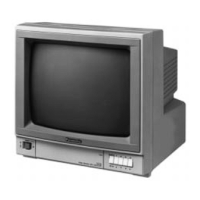
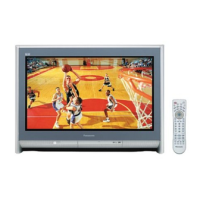
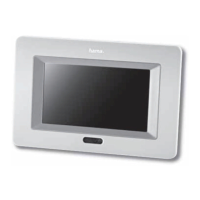
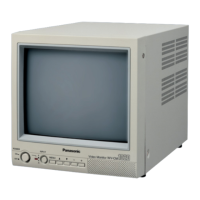
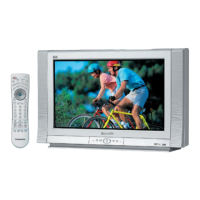




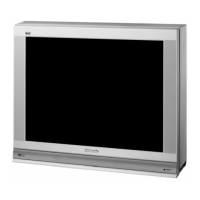
